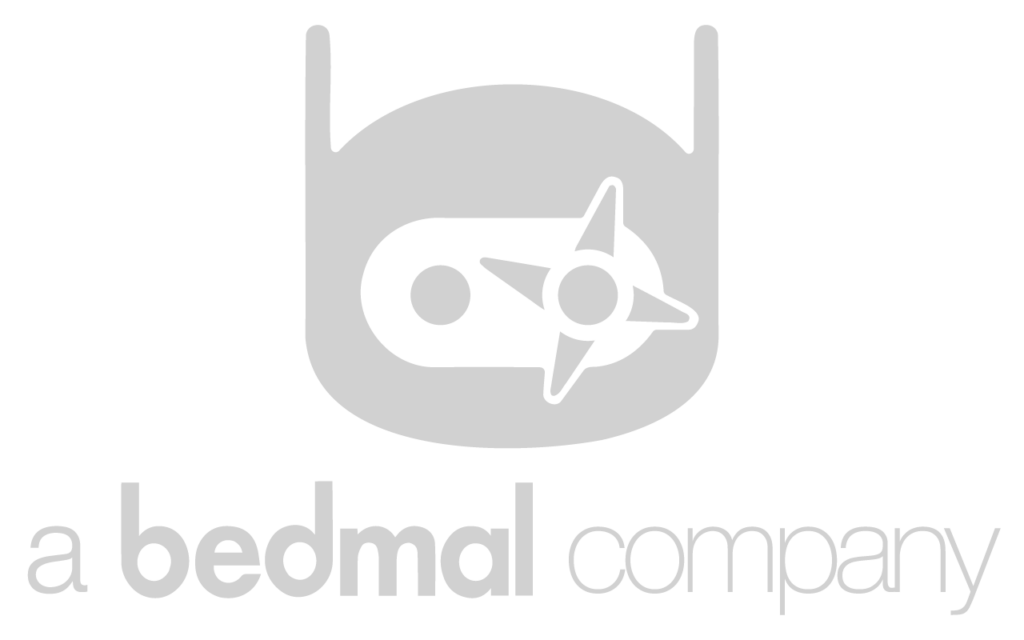Robot Mowers without a Perimeter Wire
- Designer
- December 2, 2021
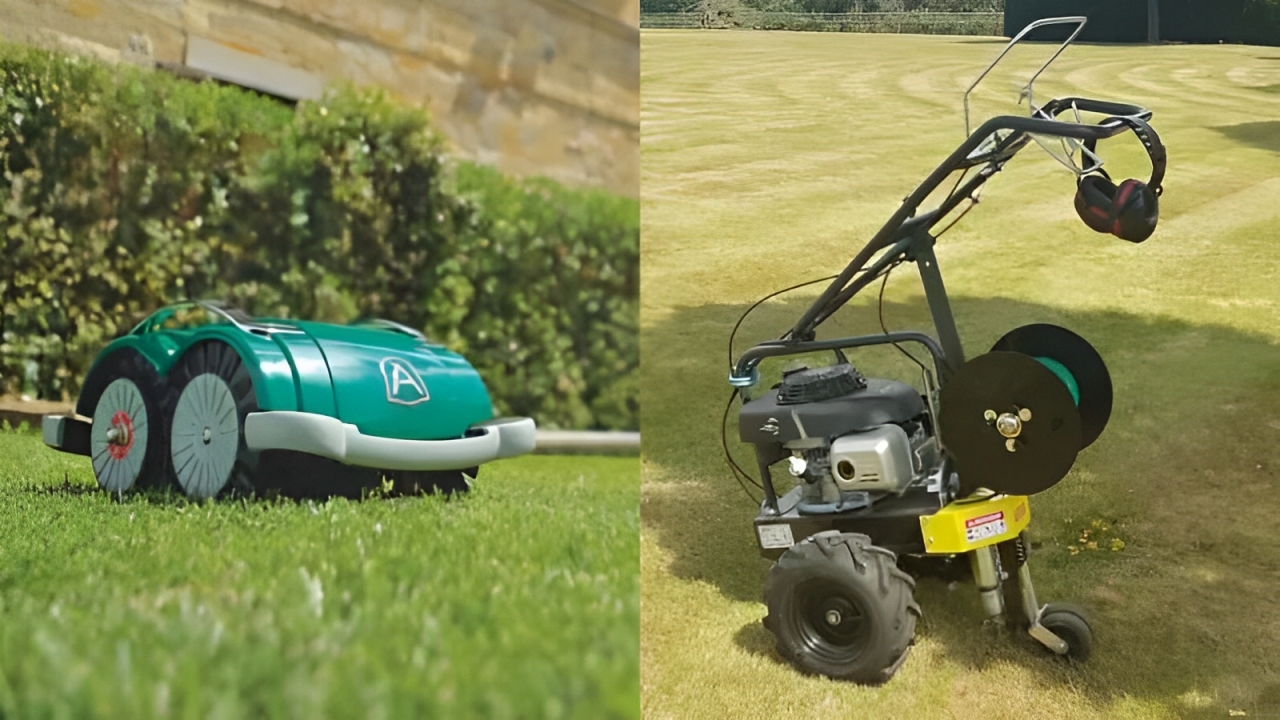
This article covers the pros and cons of robot mowers that require a perimeter wire versus mowers that don’t. If you are interested in mowers that use GPS RTK technology, also read our later article.
No perimeter wire – is it new?
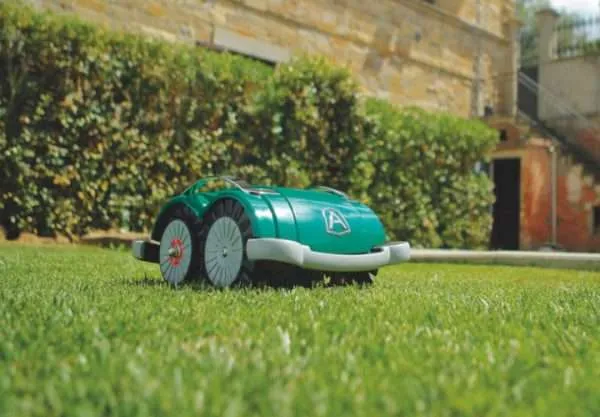
There are very few robot mowers available that do not use a perimeter wire and those that do, tend to be either for large open areas (Belrobotics RTK & Husqvarna EPOS mowers) or for small gardens with specific types of boundaries ( Ambrogio L60 & the Ambrogio ZR). The only current solution that covers all sizes, layouts and complexities of normal domestic lawns are the wired mowers (see our wired range).
This started to change in 2022 as manufacturers have started to release (or promised to release) a number of new robot mowers.
As the manufacturers start their product announcements for 2023, some of the big manufacturers (Ambrogio’s RTK mower & Husqvarna’s Nero) have revealed products for ‘normal’ gardens.
The rise of the robot vacuum has raised peoples expectations of what a robot lawn mower should be able to do but the inside of a house is a much more controlled environment that your garden.
Deciding whether your mower should be wired or wireless is only one of the decisions you need to make to ensure you choose the right mower for you. Find out what other things you need to consider when choosing a robot lawn mower.
Why use a perimeter wire?
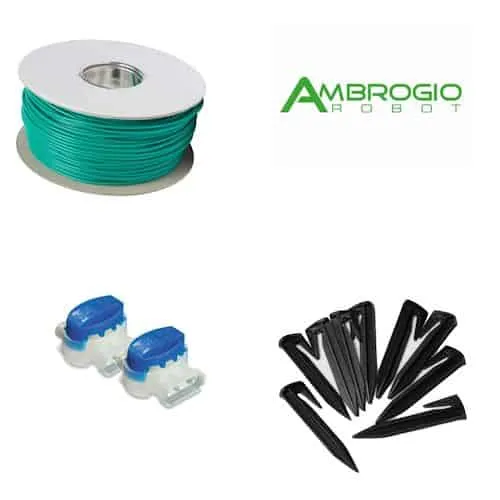
A robot lawn mower needs to pinpoint its position to within a couple of cms to ensure that it gets as close to the edge of your lawn as possible but doesn’t overshoot and end up in a flowerbed, pond etc. The perimeter wire/ guide wire is used by the mower to:
- Identify the extent of where it can mow and where it can’t – a signal is sent by the base along the wire and picked up by the mower as it approaches it.
- Allow it to navigate from the base to other areas/ zones…and back again – some mowers use ‘guide’ wires for this.
The benefits of a perimeter wire are;
- Once it is laid, it defines the edge of the lawn and is not affected by external forces e.g. weather, visibility, tree cover etc.
- If you change your garden, you can move the wire and you know that the border is redefined.
- You are in control…if something goes wrong, it is easy to work out if it is the perimeter wire or the mower where the problem lies
You may think that installing a perimeter wire is difficult but we have a lot of customers that do it themselves, have a look at our installation videos.
What’s the problem with a perimeter wire?
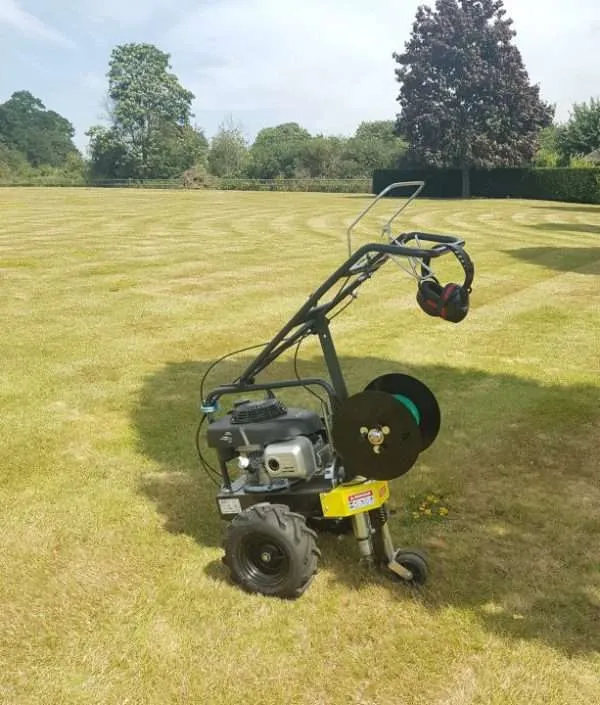
There are a few potential issues with having a perimeter wire but also mas it has been around for so long, these can be mitigated:
- Someone has to install it – this means extra time if you do it yourself, or extra cost if someone else does it.
- The perimeter wire can be damaged by animals or someone putting a spade through it – there are reinforced wire solutions available which greatly reduce the chance of a wire break.
- If you want to change the area to be mowed, it means re-laying the wire – but with gel filled connectors, it is easy to join new wire to an existing layout.
Robot vacuum cleaners don’t need perimeter wire…but then they run in very controlled environments where most areas are bordered by walls.
Is 2022 the year?
Since robot mowers have been around for over 20 years, the issues with perimeter wires are not as major as they may seem but wouldn’t it be nice to just put a new mower down and have it work out for itself where the grass is?
A number of manufacturers have been working on this for years but 2022 has given us a first glimpse of the reality…I must emphasise ‘first glimpse’ as the likelihood is that robot mowers without a perimeter wire will never be able to cope with all situations and hence perimeter/ guide wires will always have their place and it is likely that it will be a couple of years before the wireless mowers catch up with their flexibility of their wired cousins .
Different approaches
If you look at the products available/ announced, there are 2 fundamentally different approaches to solving the problem:
- Technology allowing the mower to identify its exact position
- Technology allowing the mower to identify grass (or lack of it) and other obstacles
You can also have a mixture of both!
Pin-point positioning
People often ask us why our robot mowers need a perimeter wire if they have GPS. The answer is simple, GPS is not accurate enough, we need position accuracy to within a couple of cms, with standard GPS, the accuracy is at best 70cms but normally a meter or two, at worst it could be impossible to get a position if you can’t detect 3 satellites.
This problem is not new and although the military uses enhanced GPS, experts have been working on another solution… Real-time kinematic positioning (or RTK as it is commonly known).
Read the Wiki for the details but to put it simply, as well as the GPS signal from the satellites your mower receives, you use the an additional GPS receiver (sometimes attached to the base) which transmits correction info to the mower to allow it to have pin-point positioning.
The theory is great, and you can see it in action on large open spaces (football pitches, golf courses etc. but the question is how well it will work in a “normal” uk garden. The problem is that both receivers (i.e. mower and additional receiver) need to have power, a good satellite signal and a good connection between them. Things which can affect the satellite signal are:
- The proximity of buildings/ walls, fences etc. (as the signal can bounce off them).
- The lack of a clear line of sight of the satellite which can be obscured by trees or even affected bad weather (similar to what happens to a sky satellite signal).
Similar approaches to GPS RTK are to use beacons which are placed around the lawn. The mower receives a signal from the beacons and uses those (rather than the GPS satellites) to identify its position relative to the beacons. There has also been some work on using the mobile phone network/ masts, which in effect act like beacons.
Whether you are using RTK or beacons, the mower needs then needs to be ‘taught’ where it is meant to mow, this can either be done by ‘driving’ the mower around the perimeter or mapping the perimeter on a satellite image (again another source of potential problems/ errors).
Grass/ object identification
Because of the problems obtaining pin-point positioning, other manufacturers have been looking at enabling a mower to identify grass and other objects so that it cuts the grass and knows where the lawn stops. In some ways, grass/ object identification is a similar approach to that taken by a robot vacuum cleaner.
Radar or cameras use mounted on the mower and the inbuilt Artificial Intelligence (AI) in the mower is used to match what the mower ‘sees’ against what it knows is grass and other obstacles.
In theory this approach should work well as it does not rely on external sources (GPS/ beacons) but the problem is that there are so many different types of grasses that it needs to recognise. Fortunately what one mower learns can be ‘taught’ to other mowers.
Other objects which are useful to identify are:
- Raised borders/ fences etc.
- People, animals etc.
- Dog poo – a frequent question we are asked about the current mowers!
- Intruders – some manufacturers have also put some thought into using the mowers to be a mobile security camera at night.
Using cameras is not new as all of the big brands (Ambrogio, Husqvarna, Robomow) have tried this approach but have not taken it to market as they were unable to solve the problems that the weather, direct sunlight (or lack of light) and dirt posed to cameras. This is why they started looking at Radar or GPS RTK.
Positioning vs object identification vs perimeter wire
So which approach is likely to give the best results?
There are pros and cons of each approach, but whatever the approach, it must cope in the real world which is not the controlled environment that you see on a lot of promotional videos (or animations as there is no product currently available).
The key thing to remember is that you are buying a robot lawn mower that doesn’t use a perimeter wire, they still need to get the fundamentals of a robot mower (cut quality/ reliability etc.) right first and then add the ability to not have a perimeter wire afterwards. See our article on choosing the best robot mower for you.
A summary of mowers available/ planned
L60 by Ambrogio
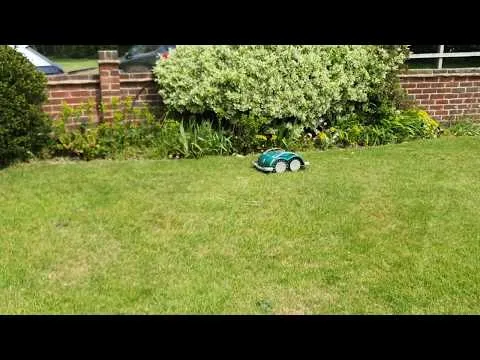
The L60 has been around for a number of years and uses 3 sensor to identify the edge of the grass: Bump sensor – to identify raised edges Grass sensor – to identify when it moves outside of a grass area Drop sensor – to identify when the grass ends and a lower flower bed starts.
The latest version (the L60 S+ extends its range to 400 m2. Although not as high tech as some of the newer models, it has proved very popular with people who want to ‘drop & go’.
Twenty ZR by Ambrogio

Ambrogio have been making robot lawn mowers for over 20 years so should know a thing or two about them.
Although most of the Ambrogio range has GPS fitted, they have gone down the route of grass identification to remove the perimeter wire.
The Twenty ZR builds on the very successful Twenty range and adds Radar and AI for grass detection and for identifying other obstacles.
Coverage is up to 1000 sq.m. and at a price which is not much more than the Twenty Elite, it will definitely be popular. The mowers started arriving in the uk in mid 2022 but in very limited numbers. We are promised a good supply in 2023 so make sure you put your name down for one if you want one.
If you really wanted an RTK machine then don’t worry, Ambrogio just announced that they will start production of RTK models in 2023 (a 4.36 with coverage up to 10,000 sq.m.) – more details soon!
Terra T7 by iRobot
iRobot are best known for their robot vacuum cleaners and so should know a thing or two about robots. Unfortunately, this robot was meant to hit the market in 2019 but we are still waiting.
This uses beacons set around the perimeter of the lawn. The beacons will have to be installed by an approved installer and may not sense smaller objects, so clear your yard of small obstacles like toys, equipment, or gardening supplies before any scheduled or on-demand mowing jobs (an extract from their manual).
Navimow by Segway

Navimow is brought to us by Segway-Ninebot, again you would think they know a thing or two about positioning…but not necessarily about robot mowers. The Segway name is best known for their self-balancing transporter but you may be disappointed to find out that Ninebot bought Segway and have stopped making the iconic transporter.
The Navimow uses what they have called Exact Fusion Locating System (EFLS) which seems to be RTK plus extra sensors. We have heard some good reports about this machine although the early test versions had some issues. They do say that you need to place the base station more than 2m away from buildings or fences and the base must have wi-fi coverage. They have now added a checklist to see if your garden meets their criteria. The key things seem to be tall trees/ building/ fences in or around the garden which is not surprising.
They have started delivering in Europe (as of end June 22), the feedback seems to be mixed but a number of people have reported issues with the software (which may be solved over time) and a few hardware issues (which may be more difficult to resolve easily).
For the latest info, check out their facebook page.
Novabot by LF Intelligence
Novabot comes from LF Intelligence whose core team were academically trained at the University of Pennsylvania.
This was a crowfunded project (see the Novabot VIP Global Launch Group facebook page) and were worried by some of the claims that are being made in response to questions people have raised….if it will do everything they are claiming then they will have a world-beating product, but we would recommend not buying one until you can see a production model working on a real lawn.
In response to questions, they have said that this machine has an HD panoramic camera, a millimeter radar sensor and uses RTK!
They will be offering 2 models, a 1000 sq.m & a 2000 sq.m. model with delivery originally promised for July 2022 but they have just started shipping test models (Nov. 2022).
EPOS/ NERA by Husqvarna
Husqvarna is one of the largest robot lawn mower manufacturers and knows lots about robot mowers. They announced EPOS (Exact Positioning Operating System) a couple of years ago and have the system working on some large open spaces. This is an RTK solution and was aimed at commercial situations (open football pitches etc.).
They have just announced (Oct 2022) a new lawn mower (NERA) that will be aimed at private gardens based on the EPOS system. It will be launched in 2023 and cater for areas from 2200 to 5000 sq.m. but we will have to wait for prices.
Willow by Eeve
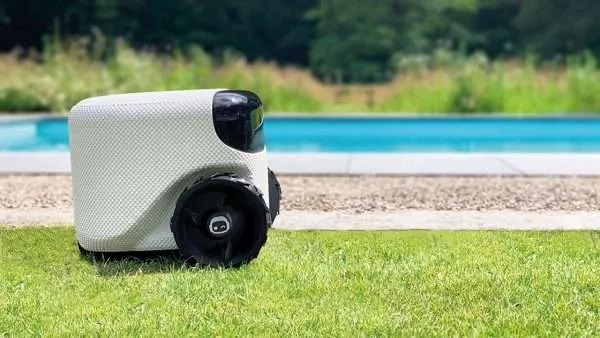
Formally called Toadi.
It is difficult to get much information about Willow but it is a strange looking machine which you would image has too high a centre of gravity but it is certainly different.
It uses an HD camera, it is 3D printed and that’s about all we know. There have been reports of people sending them back as they ended up in ponds & crossing driveways. After a couple of years, it still seems to be in the beta stage so one to look for in the future.
Despite there being little information, they have just started producing some TechTalk videos. These make very interesting watching as they seem to be very honest about the issues that they have encountered and some of those issues are likely to be encountered by other manufacturers.
Their delivery date has been pushed back from June 22 to January 2023 due to component shortages…a common problem across the whole industry.
GPS-RTK by Belrobotics
Belrobotics have been making robot mowers for a while concentrating on larger lawns (10,000 sq.m. +).
Last year they announced GPS-RTK which can be added to their current mowers so that they won’t need a perimeter wire.
The addition of GPS-RTK can increase their coverage almost fourfold by mowing in a pattern i.e. parallel ‘stripes’ rather than a more random approach taken with other mowers – don’t get excited, as there is no mower it won’t leave a stripe in the grass. You can also mix areas i.e. have one area with a wire/ random cutting and another with no wire/ pattern cutting.
Again, it will be interesting to see how this works on ‘back gardens’ but if you have a very large lawn, this is definitely one to look at. Contact Us for more details.
Conga
Crowdfunding has started for a New Zealand based mower called Conga.
This looks quite ‘retro’ compared to some of the newer models but uses cameras to augment the RTK system so may prove to solve some of the problems that you encounter when trying to use RTK in a garden with fences, tree, building etc.
Goat G1 by Ecovacs
The Chinese robot vacuum cleaner manufacturer Ecovacs has just announced their first robot lawn mower.
This will not use RTK as they consider it to be not accurate enough and not reliable in gardens that have obstacles that may obstruct the GPS signal. They have decided to use a mixture of GPS, on-board cameras and ultra wideband (UWB) technology to ensure it has pinpoint accuracy. The UWB technology requires an extra antennae to be placed at the edge of the garden (similar to the Terra T7?).
Details are limited but they have a polished video for the announcement. It will be interesting to see how this progresses.
ArduMower

If you prefer to build something yourself, it is worth looking at the ArduMower.
You can buy the mower as a kit, customise it and add a GPS RTK board to it. All the bit are available from the Ardu Mower shop.
We haven’t been able to find any decent videos of it working but there is a wiki and a forum with loads of information.
Although this is really for the enthusiast who likes building things, the shop also list Alfred which looks like a fully built solution.
Luba by Mammotion
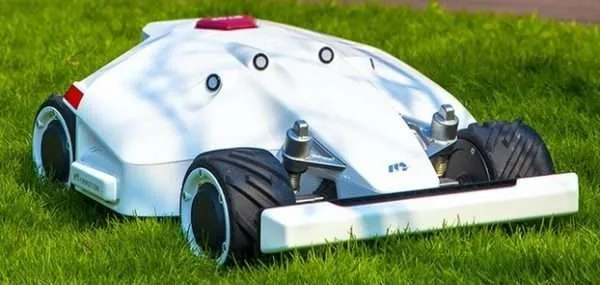
Recently announced as a kickstarter project is Luba .
This will be a 4 wheeled drive mower that can handle up to a 75% gradient similar to the Ambrogio QUAD
Details are still limited but remember that with any kickstarter project if you ‘invest’ money in it you may receive a mower at the end of the day or not (with no refund).
Give us your feedback
We intend to update the above as more details become available so if you have some first hand experience of the above, or have any other mowers which you think should be added, please get in touch.

